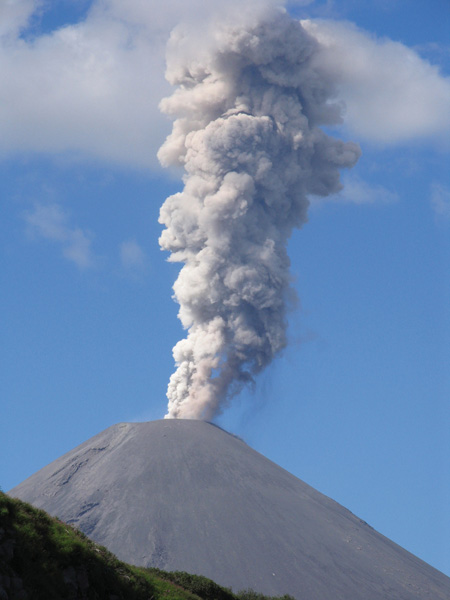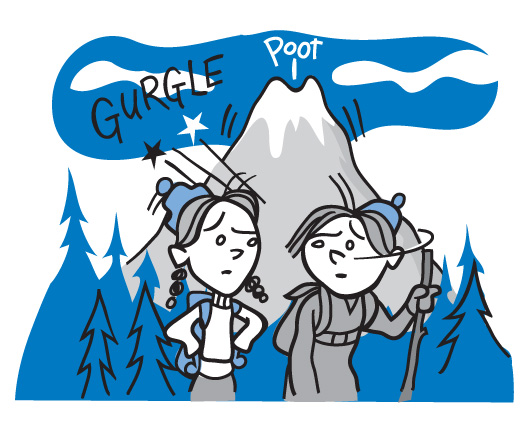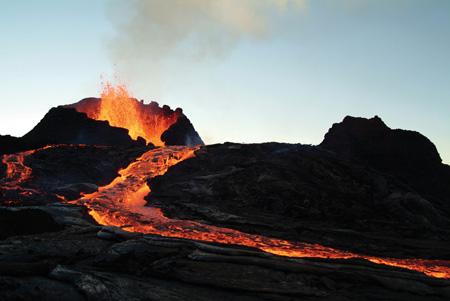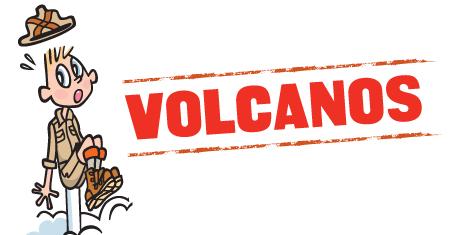Volcanos not only kill around 850 people a year, but in 2010, the ash from Iceland’s easy-to-pronounce volcano, Eyjafjallajökull, was so powerful that it stopped all flights to and from Europe for a week. But Eyjafjallajökull is just one of 1,900 active volcanos worldwide, and any one of them could really mess up your vacation plans (or worse).

The Karymsky is one of many active volcanoes on Russia’s Kamchatka Penninsula.
HOW TO SURVIVE A VOLCANIC ERUPTION
- Look out above! If rocks are raining down on you, protect yourself. Roll into a tight ball and cover your head with your hands.
- Look out below! If red-hot lava is headed your way, try to move out of its path as quickly as possible. But don’t head for low-lying areas like rivers and valleys. That’s where the lava is flowing.
- Seek shelter. Get inside as soon as possible. Close all doors and windows, and move to the highest floor.
- Stay standing. If you’re stuck on a lower level, do not sit or lie down on the floor. Volcanic gases are made up of carbon dioxide, a deadly gas. Because it’s heavier than air, it accumulates closer to the ground.

FAST FACT
• Not all volcanos are destructive. Some have a creative side. A “hot spot” is a type of underwater volcano that oozes lava from the sea floor. The lava cools quickly, and over time, this cooled lava can build up and rise above the ocean surface. This is how the islands of Hawaii were formed. Aloha!
Blowing Off Some Steam
When gasses build up beneath the Earth’s surface, they eventually have to be released. And when the Earth lets one rip, it’s often violent and deadly. Volcanic eruptions can send rocks and debris flying for miles. Volcanos belch giant plumes of poisonous gas and ash into the air. Though the lava might look really dangerous (and it is!), it’s actually the toxic gasses and raining ash that cause the most problems for people. The ash might look light and fluffy but it’s actually made of rock. Just 1 inch (2.5 cm) of volcanic ash is heavy enough to cause a roof to collapse.

The molten rock that flows from an erupting volcano can travel many miles before slowing and cooling.
Going Global
The dangers of living near the base of an active volcano are pretty obvious, but major eruptions can actually affect the whole world. The ash and gasses blasted into the sky by a major eruption can block sunlight and lower temperatures across the globe. This is known as “volcanic winter.” In 1815, Mount Tambora in Indonesia had the biggest eruption in recorded history. The following year is known as the “Year Without a Summer.” Temperatures dropped in Asia, Northern Europe, and North America and caused many crops to fail, leading to food shortages. The year of 1816 is also known as “Eighteen Hundred and Froze to Death.”
